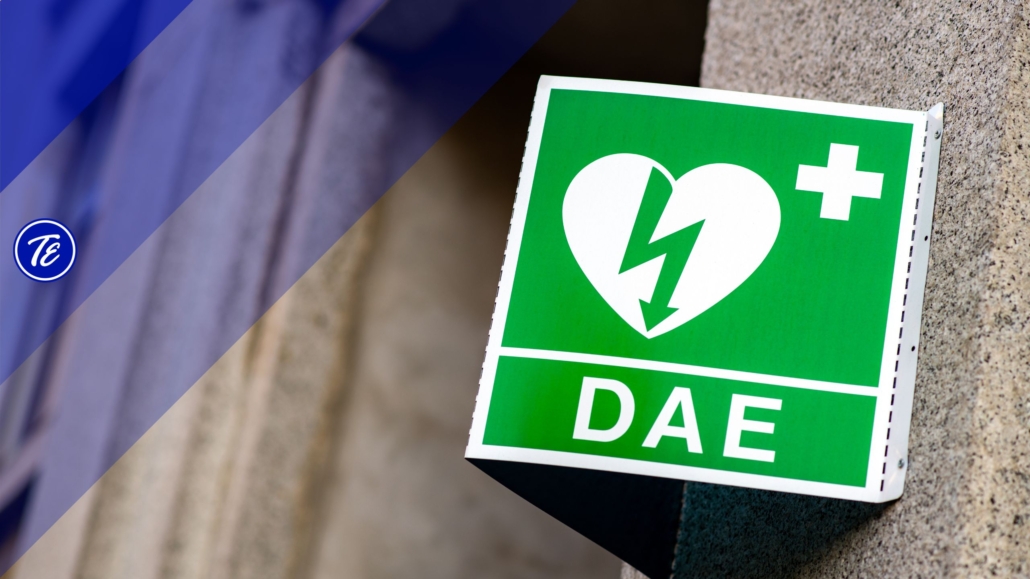The defibrillator: when it is obligatory and how to use it
The defibrillator, a device that can save lives, but still too often is underestimated or ignored: when it is mandatory to have one available and especially how to use it in an emergency? Every year lots of people are affected by sudden cardiac arrest and part of them lose their lives because they were not rescued promptly. What are the regulations regarding the obligation of defibrillators in public and private places? Which structures must be to provide? If not, what are penalties?

Requirements and regulations for compulsory defibrillators
The defibrillator can be manual, automatic, semi-automatic or implantable, and serves to defibrillate a patient affected by cardiac arrest or ventricular fibrillation by delivering an electric discharge to the heart.
External automatic or semi-automatic defibrillators (AED) are an important first aid tool in the event of sudden cardiac arrest. Their dissemination and the mandatory presence of AED in public or private places is subject to specific requirements and regulations. The AED is mandatory only in some contexts: for example, in workplaces with over 15 employees, in gyms with more than 300 square meter2 area, sports facilities with a seating capacity of more than 500, high-traffic areas such as airports or railway stations with an average of at least 500 people per day, in accommodation facilities such as hotels with at least 25 beds and in medical transport.
Pertanto, l’acquisto e l’utilizzo dei DAE deve essere effettuato seguendo specifiche normative che regolamentano la qualità del dispositivo e la formazione necessaria per il suo corretto utilizzo. These regulations are dictated by the Ministry of Health, the Italian Society of Emergency Medicine and the Italian Federation of Cardiology. Shortly, AED must comply with EC standards and EN 60601-1.
In addition, for the use of the AED, specific training is required by personnel holding a certificate of first aid and a specific course for the use of the defibrillator. This training must be renewed periodically and ensure adequate knowledge of the procedures for use and the actions to be taken in the event of sudden cardiac arrest.
Positioning and maintenance of the defibrillator in public and private places
It is essential that the defibrillator is easily accessible, visible and strategically located. First, it is important to assess the frequency and type of activity carried out at the place where you intend to place the defibrillator. The ideal place for placing the defibrillator is an easily accessible, clearly visible and possibly protected place in a suitable case.
The defibrillator must be regularly maintained so that, for example, the batteries must be checked to ensure they are fully charged and replaced when necessary. Also, check that the conductive wires are in good condition and that the adhesive bearings are properly attached, replacing them if necessary.
Who can use the AED?
The defibrillator can be used by doctors and non-medical health personnel, but also by non-health personnel provided they are trained specifically.
Training for the use of the AED
Mandatory training for the use of the AED is essential to be able to intervene promptly in case of sudden cardiac arrest. The Italian legislation provides for the obligation for certain categories of people, such as health professionals, school staff and staff of companies, to be trained in the use of the AED.
The training consists of a theoretical and a practical part, so that participants acquire the necessary skills to use the DAE correctly. The theoretical part examines the basic concepts on the physiology of the heart, the causes of cardiac arrest and the modalities of intervention with the AED. In addition, the operation of the external semi-automatic defibrillator and the precautions to be taken during the intervention is explained.
On the other hand practical practice consists of exercises on a dummy to simulate the various situations in which sudden cardiac arrest may occur. Participants learn how to place the adhesive plates on the patient’s chest, how to activate the defibrillator and how to follow the voice instructions provided by the device.
Procedure for proper use of the defibrillator during a heart emergency
First you need to verify that the defibrillator is able to work properly and that it is loaded at least 50% of its capacity. Next, you have to access the adhesive pads, removing the protective paper and placing them on the chest of the person to be rescued, following the instructions on the device.
Una volta posizionate le pad, è necessario collegare il defibrillatore mediante i cavi forniti e accendere il dispositivo, seguendo le istruzioni riportate sul display. The defibrillator automatically performs a heart rhythm analysis and, if a ventricular fibrillation or a ventricular tachycardia without a pulse is detected, it will beep indicating to press the discharge button.
Before you press the discharge button, you should make sure that all the people present are far away. Then press the button firmly and wait until the defibrillator emits an electric discharge. After discharge, the defibrillator will resume the analysis of the patient’s heart rate and will indicate whether it is necessary to repeat the procedure. If no more electrical heart activity is detected, it will be necessary to immediately begin cardiopulmonary resuscitation.

